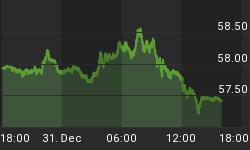Human beings spend their entire lives working for money but less than 5% actually understand how money works. This has got to be the world's greatest irony.
What is money and how did it come into existence? How come money you earn today depreciates in value and buys less in ten years time? These are questions people never bother to ask. No, everyone is just too busy caught in the rat race, trying to "earn a living", whilst their savings continue to depreciate over time. Inflation is now accepted as a part of life, something as natural as the rising sun.
Through this article, I hope to explain how the world's monetary system works. So, in order to fully understand money and how it works, let us turn to history.
Originally, money was a hard tangible good freely chosen by society as a store of value/medium of exchange. For centuries, gold and silver provided this function. Today, almost all money is intangible. It is not, nor does it even represent a hard tangible good. Under the modern central banking system, a government forces its citizens to accept its own DEBT as the only form of legal tender (currency or medium of exchange).
It all started in December 1913, when a bunch of elite bankers eloped to Jekyll Island in the US for a secret meeting. Over the next few days, these powerful bankers gave birth to America's Central bank, which we know today as the Federal Reserve. The plan was simple. The new Central bank would not be called a Central bank because America did not want one. Hence, it was called the Federal Reserve. The bank was to be controlled by Congress, but the majority of its members were to be selected by private banks, which happened to be shareholders of the Federal Reserve. You may not know this but the Federal Reserve is the only private organisation in the world whose accounts have never been audited to date.
Once the Federal Reserve was formed, the power of creating money was taken away from the American people and placed in the hands of the Federal Reserve who could expand or contract credit at its will. The Federal Reserve's main official agenda has always been to "manage" the global economy while keeping inflation under control. So if the Federal Reserve's job was really to protect savings from inflation, why then has the US dollar lost over 90% of its purchasing power since the Federal Reserve came into existence? This is one question not many are willing to ask!
Take a look at the chart provided below. As you can see, between 1825 and 1913, inflation was almost zero. However, in the Federal Reserve era, inflation has really shot through the roof.
Thanks to the Fed's "inflation controlling" efforts, today the dollar's purchasing power is 18.74 times LESS than what it used to be in 1913. More importantly, you'll see that the majority of this devastation in the dollar's purchasing power came after 1971 when Nixon removed gold from the monetary system!
Consumer Price Index 1825-2004 (Source: www.globalfindata.com)
Before 1971, US dollars were backed and fully convertible into gold at a fixed rate. All banks would happily exchange US$35 for an ounce of gold. The world's other major currencies at that time were in turn pegged to the US dollar.
In 1971, US-President Nixon "shut the gold window" as he stopped gold payments to foreigners in exchange for dollars. Gold was knocked out of the financial system and paper currencies started floating against each other. The new era of paper currencies had arrived. This was basically inflationary since (without the backing of gold), Central banks now had the absolute authority to create as much money as they wanted. And create money they did! Since the abandonment of the gold standard, the global money supply has shot up almost 20 times in just 34 years! That is a 20-fold increase in the amount of money floating around our planet.
Now - the logical question? What is the real motive behind pumping the money supply? The answer is "interest".
Under the present system, the American government borrows from the Federal Reserve whenever it needs to raise money. The American government issues Treasury bonds and the Federal Reserve buys these bonds, thereby lending money to the government.
You see, the US government borrows money by selling bonds in the open market. The Fed is said to "buy" these bonds from banks and other financial institutions, but in reality, it buys these bonds by simply manufacturing money "out of thin air". Credit entries are made with different banks/financial institutions and (presto!) new money is created. This money is then utilised as a "reserve" by these banks against which they can make new loans. Remember, the more money there is to lend, the more interest to be earned. While consumers and corporations continue to borrow their heads off, it is the banks that really benefit by collecting interest on these loans. As more and more credit is created, the value of money continues to drop and savings are confiscated through inflation.
In my opinion, the only reason why people accept the current monetary system is due to the fact that they do not understand it. A monetary system, which is not backed by a tangible and precious commodity such as gold is both immoral and subject to abuse. As the American debt situation continues to get worse and with interest-rates beginning to rise, this whole house of cards may be on the verge of collapsing. When this happens, the entire planet will lose faith in paper currencies and will rush to the only form of time-honoured wealth, which has intrinsic value. Of course, I am talking about gold.
Lots & lots more follows for subscribers...
















